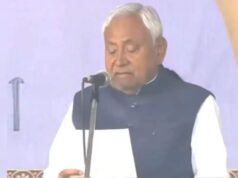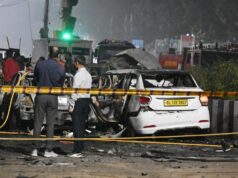In old Delhi, there weren’t medical stores as we have today. During those days, Hakims and Vaidyas took care of people’s health. They provided medicines when someone fell ill. This made each neighborhood almost self-sufficient. Inside Kucha Seth, there was a Vaidya who ran a charitable dispensary in a large room adjoining a Jain temple. Vaidya Kanhaiyalal Ji, a dignified personality with a large turban, often wore a white sherwani-like coat and dhoti. During winters, his coat was made of indigenous warm fabric. His mouth was always stained with betel, his face had mild smallpox scars, and he carried a silver-handled stick.
Sitting comfortably on the floor, supported by a cushion, he would check the pulses of patients and distribute medicine. The medicines, often in the form of ash packets, were to be consumed with honey, syrup, or cream depending on the ailment. The dispensary operated on donations. Vaidya Kanhaiyalal Ji was also a confidant and advisor to most families who visited him, almost like a family member.
At the other end, turning right from the intersection of Kucha and Gali Anar, was Hakim Zorawar Singh’s clinic. Hakim Sahab, a dashing young man, always wore tight churidar pajamas and a grey or brown achkan. With his striking eyes, sharp nose, and twirled mustaches, he was always ready to impress. He wore a high-crowned cap and neatly held a betel leaf in his mouth. His charming smile could win anyone over, but he maintained propriety at all times.
His method was similar—diagnosing through pulse reading. Popular among children, he often gave them sweet remedies in small clay pots, making illness an excuse for some kids. Sometimes, patients needed fennel or mint extracts, which they fetched from the nearby Gullyan market.
Patients paid a small fee for Hakim Ji’s medicines, usually a few annas. Both the Vaidya and the Hakim would visit homes if needed, though it’s unclear if there was a set fee for this service, as it was nominal and never a burden.
For serious illnesses beyond the Vaidya and Hakim’s expertise, there was a doctor within reach. Dr. Kapoor’s dispensary was located in Chandni Chowk, a few shops down after turning right from Dariba Kalan. A cheerful, fair-skinned man in a pant-coat, he treated everything from common colds to malaria, jaundice, and tuberculosis, even performing minor surgeries when needed. His income came from the pink and red mixtures sold at his dispensary for one or two rupees. House calls cost around two rupees.
For laboratory tests, Dr. S.K. Sen’s large pathology lab was opposite Dariba. A traditionally dressed Bengali gentleman, he was courteous and sweet-spoken.
Unique among them was Jarrah Ayub Khan, whose clinic was near the intersection of Mohalla Chipiwara and Gali Guliyan, fifty yards from Dariba towards Jama Masjid. Ayub Khan specialized in treating boils and abscesses. He applied brown-black ointments from thick paper tubes and performed minor surgeries when needed, all in his modest clinic. Patients, especially children, endured his stern scolding amidst their cries.
Without antibiotics or sterilization, Ayub Khan cleaned his instruments by wiping them with cloth and heating them in oil lamps or candle flames. Treatment costs ranged from a few annas to one rupee. Amidst the Khatri, Jain, Baniya, and Kayastha families, Ayub Khan was an integral part of the community, maintaining deep bonds beyond mere acquaintance, despite his distinct Muslim identity.







